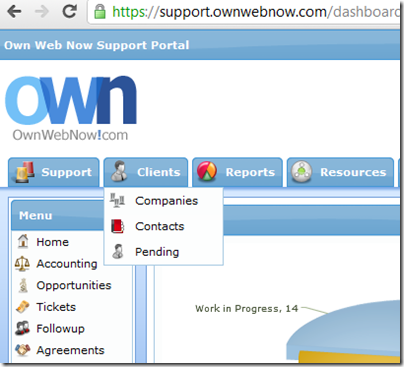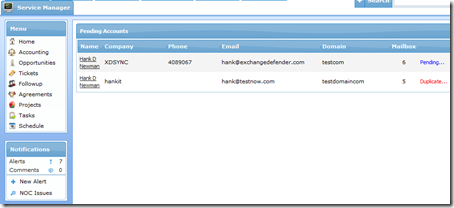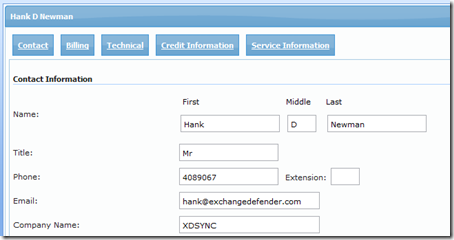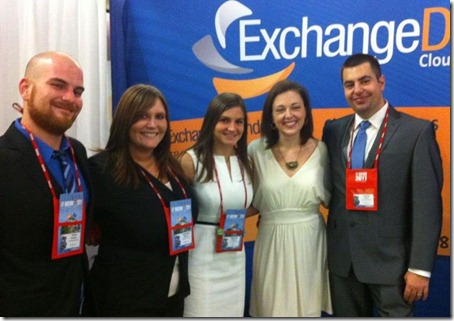Note: Prior to writing this blog post I actually did some research because I’m extremely biased towards money and as everyone in this business, privy to some rumors and grapewine complaints. This is something that has been on my mind for a while and it appears many of you disagree with me. I am offering this post therefore as my opinion as a devils advocate. While I’m sure it will offend you, the goal is not to offend you but explain the circumstances as I see it and hopefully find a common language towards a more productive way of working together.
Business Perspectives
The Vendor
It’s a crisp spring morning.
The iPad 2 has just been announced and you’re starting to resign yourself to the fact that you need to follow the marketing in order to sell the technology. Screw it, let’s call our clients in for a cocktail hour next week and show them how their iPad hooks into all that stuff we’ve sold them.
It’s Thursday, cocktail and hors d’oeuvre are carefully surrounding your banners as the clients pour in.
You’re trying to be a good host while still staying at least six feet away from those Costco cookies. Yes, they do put crack in them.
Wonder how much business we can drum up from this?
The Client
Man, this is a nice office!!! Must cost a fortune.
And is that a BMW? I remember when this ass was delivering our PCs in a pickup truck.
55” LCD as a sign? A friggin sign? They burned $1,000 just to show off their logo to people that come to their office?
This is why we pay so much for their “Managed Services” – I bet you they don’t do jack. And god help me if I meet that prick from their helpdesk, I’ve been waiting months to punch him right in his square mouth!
Wonder what they are going to try to sell me today?
The Vendor-Client Tug of War
In every transaction there is a little component that is never put on the invoice or on the receipt, but it’s huge. The Respect. Clients feel like they are handing over hard earned money and that the person charging them should treat them with outmost respect. This is why everyone hates dealing with the DMV. Meanwhile the service provider feels like they are providing something truly unique and that the clients are nowhere nearly as grateful as they should be for what they are getting.
Nobody has drawn more skepticism from the community than Arnie Bellini and ConnectWise with their investments/acquisitions/takeovers/purchases of LabTech, Quosal, HTG and CharTec. The best public display of this is available for your consideration here: Observations from IT Nation.
Back when I first read that blog post my reaction was decidedly different:
Kate: So at what point is it going too far when you’re trying to sell everything all the time?
Vlad:
That depends on the clients bank and their overdraft policies. It’s OK to keep on selling until you’ve put their account $200 into the red. At that point I’d switch to a monthly reoccurring charge.
So I’m just after the money? Yes, that’s what we’re in the business of!
Hell, Arnie is being nice here. If I were him I’d be buying a hosting company, an antivirus company, an offsite backup company, a marketing company, a web design company… you got urinals? I’ll sell you a cake.
At that point the rant got too dirty even for Vladville but those of you that have seen me do my act live can probably guess that the list went on for a while.
Here is the thing – this is just capitalism at it’s finest.
Unfortunately, capitalist behavior puts the client at the disadvantage. While the business is pursuing it’s next rising star and funding it with the cash cow, you feel like all your hard earned money isn’t being spent in the best possible way to provide you with more services. After all, you’re paying for it and the moment the ink on the check dries you’re expecting more in return for it. So when the vendor spends money on something that isn’t directly and significantly benefiting you it starts to leave a very sour taste.
Truth is, you don’t want the alternative. The alternative is the vendor solely focuses on the product or service you’ve paid for and pays no attention to anything else. While this may sound great immediately, in the long term (and history has shown this in the software business over and over) the companies that aren’t constantly expanding and growing tend to die in either relevance or profits or both.
There is no loyalty in business. This isn’t a marriage. This isn’t a family. This is a transaction. Those of us that want to increase the frequency and sizes of those transactions have to get better at what we’re putting on the invoice. VARs change solutions and tools more often than their underwear – so if the tools and solutions don’t evolve and grow at a faster rate they pretty much face certain obsoletion.
I (and I’m sure almost all of you) have been on the receiving end of this as well, when a client “chose to go in a different direction” because they didn’t like the direction the company was taking, found a product that was $1 cheaper somewhere else or generally reduced you and your service to a discount rack at Dollar General.
Clients reserve the right to take their business elsewhere. Businesses live and die through their investments.
Fundamentally, that’s the way it’s supposed to be. It’s not always perfect (sales might be much better than support departments so it may seem like the company cares more about dollars than clients) and it’s not always fair (company may have to push discounts or spend more on marketing to cover for lost business) and it’s never easy (sometimes meeting client expectations requires a lot more work than it’s worth) and it’s usually hard.
In my opinion, what Arnie & Co did and what they continue to do is in their best interest and therefore the best interest of their clients because it continues to fundamentally strengthen the core product and the company.
But you should consider your options as well – if you have concerns over the vendors you are choosing and their level of respect for your business – then the data and the business better be portable so you can switch to those greener pastures when they present themselves. This is true for all of your software, all of your hardware and all of your cloud solutions as well. When you lose control of your data you lose decision making control over your business and arguably your ability to run your business.
Business of fairness is hard to reconcile. It’s seemingly only unfair when you’re the one paying the bill. If you run a business you don’t apologize for being successful, you celebrate it. We all (from the biggest to the smallest) care about profit, about margins about utilization and about stickiness. Yes it sucks when the shoe is on the other foot but that’s why we all work so hard. I (and I know some of you will disagree) believe that even the most opportunistic folks out there happen to be good people and being successful in business means embracing competitiveness.
Folks, it’s all about the money. The end.
…
Now this is my opinion and how I run and build my business. Personally, I’ve had plenty of people offer me advice on how to run ExchangeDefender and why not to focus on Shockey Monkey (because they already bought Autotask or ConnectWise) and they left anyhow. If I didn’t invest in a total cloud management platform I never would have the level of success we have today and we’d be holding a dying antispam business backing something that nobody wants to do anymore – manage onsite Exchange. Now I am in a spot where I am simultaneously launching an MSP of sorts (for the partners that don’t want to do the cloud in house and only want the profits and their brand on top of it) and I need an RMM on the backend that is going to monitor and help support that entire business. I’m partnering with a bunch of vendors and sponsors and my partners on everything else that’s needed.. That’s my deal. External parties rarely get the big picture of what is going on and if I fail none of them are going to feel bad and pay for my kids college.
The conversations, emails and discussions I’ve had with some of you over the past few days have been truly eye opening in terms of how this goes both ways. Strangely enough, these were calls ranging from my largest clients to the folks that don’t do any business with me at all. That’s community – we try to help one another even when we don’t get anything out of it. But once the cash changes hands that is a completely different story.
Please don’t use the comments here to bash Arnie & Co, I only mentioned them because they happen to have the most public commentary about this issue and it’s one that is going to get even bigger as there is more MSP tool consolidation. Same stories floated back when Dell bought SilverBack, when Autotask bought VARstreet and it’s just a nature of business. If you don’t like it, make your data more portable and less dependent on a single vendor – but that comes at a cost too.














 For the less coherent, more grammatically correct realtime insight, follow me on Twitter at
For the less coherent, more grammatically correct realtime insight, follow me on Twitter at